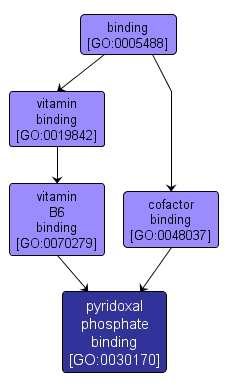GO TERM SUMMARY
|
| Name: |
pyridoxal phosphate binding |
| Acc: |
GO:0030170 |
| Aspect: |
Molecular Function |
| Desc: |
Interacting selectively and non-covalently with pyridoxal 5' phosphate, 3-hydroxy-5-(hydroxymethyl)-2-methyl4-pyridine carboxaldehyde 5' phosphate, the biologically active form of vitamin B6. |
|

|
INTERACTIVE GO GRAPH
|














